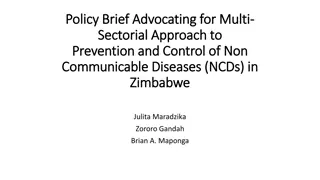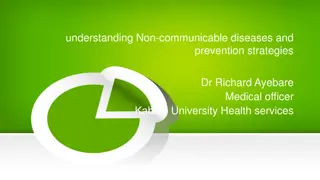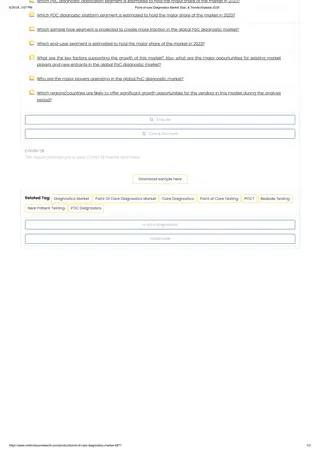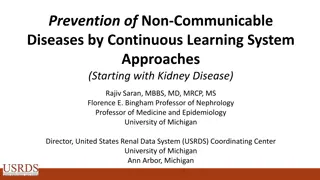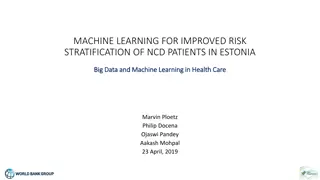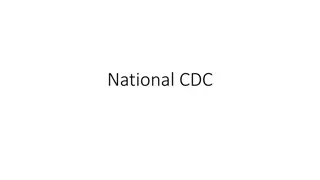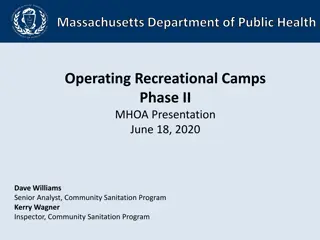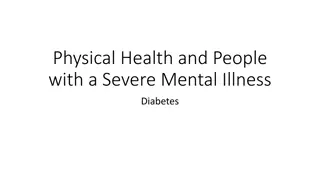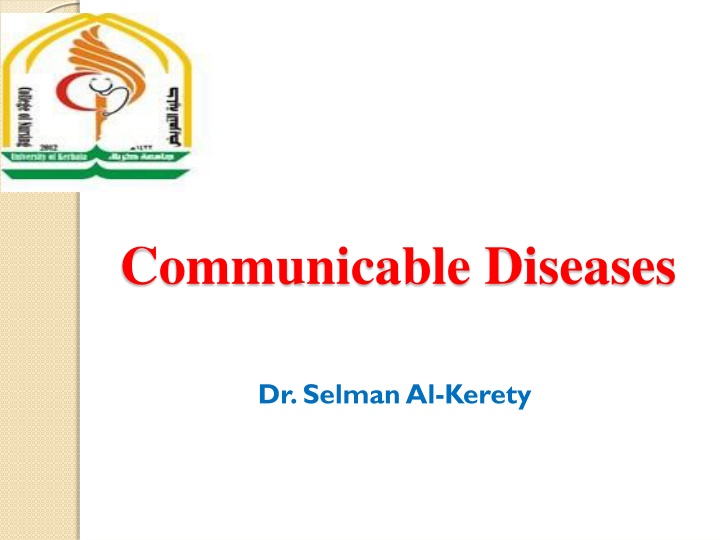
Communicable Diseases and Their Epidemiology
Learn about communicable diseases, including how they spread, the chain of infection, characteristics of infectious agents, reservoirs, portals of exit, modes of transmission, and means of transmission. This comprehensive overview covers the key aspects of these diseases and their impact on public health.
Download Presentation

Please find below an Image/Link to download the presentation.
The content on the website is provided AS IS for your information and personal use only. It may not be sold, licensed, or shared on other websites without obtaining consent from the author. If you encounter any issues during the download, it is possible that the publisher has removed the file from their server.
You are allowed to download the files provided on this website for personal or commercial use, subject to the condition that they are used lawfully. All files are the property of their respective owners.
The content on the website is provided AS IS for your information and personal use only. It may not be sold, licensed, or shared on other websites without obtaining consent from the author.
E N D
Presentation Transcript
Communicable Diseases Dr. Selman Al-Kerety
Communicable Diseases They are diseases that spread by direct or indirect contact from infected person to a susceptible host
Epidemiology of Communicable Diseases Chain of infection: Series of events or conditions that lead to the development of communicable diseases.
Infectious Agent :Characteristics 1. Morphology: Color, shape, and size. 2. Spores : The ability to produce capsules in order to survive. 3. Life cycle: The nature of life that the agent spend in the host body. 4. Viability: The ability to survive. 5. Pathogenicity: The capacity of the agent to cause disease in the infected host.
Infectious Agent :Characteristics 6. Virulence: Refers to the severity of the disease. 7. Infectivity: The capacity of an agent to produce infection or disease 8. Tissue selectivity. 9. Host selectivity. 10 Toxicity: The capacity of the agent to produce a toxin or poison.
Reservoir: the natural habitat in which an agent lives, grows and multiplies. Human - persons with symptomatic illness, or may be unapparent or chronic carriers. Animal - cows, pigs, sheep, raccoons, bats, dogs, cats, birds, rodents etc. Environmental - plants, water, food and soil.
Portal of Exit: Path by which an agent leaves its human or animal source host. Respiratory tract Urine Feces Conjunctiva Skin lesions Percutaneous Placental
The modes of Transmission It is the means by which the infectious agent which cause the disease transferred to a susceptible host.
Means of Transmission 1. Air-borne transmission: The infectious agent is present in the air and inhaled (inspired) by susceptible host during respiration. ex. Measles. 2.Feco-oral transmission. ex. Hepatitis A , Salmonella. 3. Skin to skin contact.ex. Dermatological diseases,STDs. 4. Transmission by direct inoculation. Transmission through blood. ex. AIDS, Hepatitis B, C and D. 5. Transmission by vectors. ex. Scabies, Malaria
Portal of entry : The means by which an infectious agent invades the host. This may include the respiratory tract, ingestion, dermal, blood borne, mucous membranes, etc.
Susceptible Host The person who is at risk for developing an infection from the disease.
factors make a person more susceptible to disease age (young people and elderly people generally are more at risk), underlying chronic diseases such as diabetes or asthma, conditions that weaken the immune system like HIV, certain types of medications, invasive devices like feeding tubes, and malnutrition

